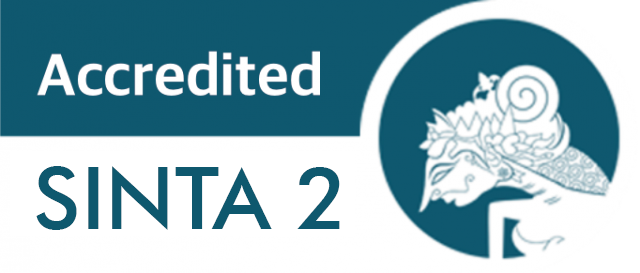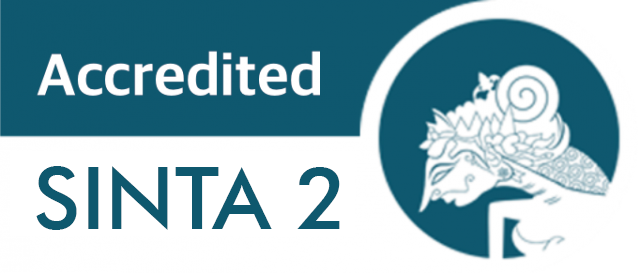The Association Between Sociodemographic Factors, Onset and Duration of Ilness With Personal and Social Performances in Outpatient Chronic Schizophrenia in Stabilization Phase
Introductions: Schizophrenia is a serious mental illness that affects a person’s daily quality of life. Various factors such as sociodemographic factors, onset, and duration of illness can be related to the quality of life in schizophrenia. The parameter for measuring quality of life in schizophrenia patients is the Personal and Social Performance Scale (PSP Scale). This study is aim to analyze the association between sociodemographic factors, onset, and duration of illness in outpatient chronic schizophrenia patients in the stabilization phase with their personal and social performances. Methods: This study is an observational analytical research with a cross-sectional study design. The sample of this study was outpatient chronic schizophrenia stabilization phase in a mental hospital of North Sumatra Province, Prof. Dr. Muhammad Ildrem Medan Mental Hospital and selected using the purposive sampling method, where after calculating using the multivariate analysis predictive concept method, the number of samples needed was 80 samples. The data used is primary data obtained directly from respondents. The analysis used is univariate, bivariate and multivariate analysis with chi-square. Results: There is a significant relationship between the level of personal and social function with education level (p=0.002), marital status (p=0.001), and employment (p=0.002) in outpatient chronic schizophrenia stabilization phase. Conclusion: The results of multivariate analysis showed that the most significant variables with personal and social function in outpatient chronic schizophrenia stabilization phase were marital status (OR=4.395), employment (OR=4.220), and education level (OR= 0.220) in order of the variables with the greatest strength of influence.
Introductions
Schizophrenia is a syndrome or variation of the disease with symptoms of deviation in the thoughts, perceptions, emotions, and behaviour disorder[1]. The symptoms of schizophrenia are divided into two categories: positive symptoms and negative symptoms. In the case of positive symptoms, individuals with schizophrenia experience the sensation of their thoughts echoing and repeatedly circulating in their minds, accompanied by delusions, hallucinations, and persistent false beliefs. In contrast, negative symptoms manifest as extreme apathy, infrequent speech, and social withdrawal[2]. According to the American Psychiatric Association (APA), patients with schizophrenia go through three stages in their lives: the premorbid phase, the prodromal phase, and the psychotic phase. During the premorbid phase, an individual’s functions remain as usual. In the prodromal phase, several non-specific symptoms emerge, including difficulty sleeping, anxiety, irritability, depression, lack of focus, fatigue, and even a decline in social functioning and personal performance. These symptoms can last for several months to years before a definitive schizophrenia diagnosis is made. The symptoms experienced by individuals with schizophrenia often affect social performance, cognitive decline, and social and personal functioning[2],[3],[4].
The results of research conducted by Global Health Metric in 2017 stated that schizophrenia is the top cause of disability in the world with a prevalence of nearly 1% of the world's population[5]. Data from the World Health Organization (WHO) in 2022 indicates that schizophrenia affects 24 million people worldwide, or 1 in 300 individuals (0.32%), with 1 in 222 (0.45%) occurring in adults[6]. The Basic Health Research Indonesia (Riskesdas), conducted in 2018, reported an increase in the prevalence of schizophrenia in Indonesia, rising to 400,000 people, or from 1.7 to 7.0 per 100,000 population. North Sumatra ranks sixth in Indonesia for the highest number of schizophrenia cases, with a prevalence of 6.0 per 100,000 population.
Schizophrenia is caused by several factors. The first factor is genetic, where the closer an individual's relation to someone with schizophrenia, the higher the risk of developing the disorder. The second factor is psychosocial stressors, such as marital problems that force an individual to adjust to life changes. The third factor is education level. According to the sociogenic hypothesis, low education levels lead to stress, which can trigger the onset of schizophrenia. The fourth factor is employment status. Work-related issues can serve as stressors, and if not properly managed, they may contribute to the development of schizophrenia[8].
Schizophrenia is a serious mental illness that can cause various complications that affect the daily life of a person's quality life. Sociodemographic factors such as low education level, marital status, low income level, and employment may be associated with complications in schizophrenia patients. The level of education and employment status can affect a person's ability to interact socially and understand applicable social rules, schizophrenia patients with low education levels and unemployment will have difficulty in understanding and following social norms, as well as difficulty in carrying out complex social tasks. Social support such as marital status and family support have a positive impact on the social functioning of patients with schizophrenia[9],[10].
The onset and duration of illness in schizophrenia patients significantly affect the severity of complications, particularly in personal and social performances. The onset of schizophrenia patienst at a younger age is associated with more severe complications and a greater impact on social and personal development, which can affect interpersonal relationships, independence, and overall social functioning. The length of illness in schizophrenia patients affects the complications of the sufferer. The duration of illness also influences the complications experienced by patients. The longer a person endures uncontrolled symptoms of schizophrenia, the more likely they are to experience a decline in social function and difficulty in performing daily tasks[9],[11],[12]. A study conducted in Jordan found a relationship between the level of education, social support, and employment with the quality of life in schizophrenia patients.
Schizophrenia is the leading disability-causing serious mental illness worldwide due to its complications, which significantly affect the quality of life. The quality of life in schizophrenia patients may be influenced by sociodemographic factors, as well as the onset and duration of the illness. One tool used to measure the quality of life in schizophrenia patients is the Personal and Social Performance Scale (PSP Scale). Therefore, this study aims to analyze the association between sociodemographic factors, onset, and duration of illness in outpatient chronic schizophrenia patients in the stabilization phase with their personal and social performances.
Methods
Participants
This study is an observational analytical research with a cross-sectional design. The sample consisted of outpatients in the chronic schizophrenia stabilization phase at Prof. Dr. Muhammad Ildrem Medan Mental Hospital in North Sumatra Province, selected using purposive sampling. Eighty outpatients in the chronic schizophrenia stabilization phase were recruited as participants through consecutive sampling. Inclusion criteria included being male, aged 25-60 years, diagnosed with schizophrenia according to the ICD-10 criteria, in a stable treatment phase, and accompanied by a family member or caregiver familiar with the patient's condition for at least one month. Exclusion criteria included having chronic physical diseases that could affect social and personal functioning in daily living, as well as comorbidity with substance use or other mental disorders.
Research Instrument
The instrument applied in this research is the Personal and Social Performance Scale (PSP), which measures how well patients with schizophrenia perform
S. L. Videbeck, Psychiatric Mental Health Nursing, 8th edition. Philadelphia: Wolters Kluwer, 2020.
Departemen Kesehatan Republik Indonesia, Pedoman Penggolongan dan Diagnosis Gangguan Jiwa di Indonesia (PPDGJ III), Edisi Ketiga. Jakarta: Direktorat Jenderal Pelayanan Medik, Departemen Kesehatan RI, 1993.
American Psychiatric Association, Diagnostic and Statistical Manual of Mental Disorders, Fifth Edition (DSM-5), Fifth Edition. Washington, DC: American Psychiatric Publishing, 2013.
American Psychiatric Association, “Practice Guideline for the Treatment of Patients with Schizophrenia,” Washington, DC, 2020.
Global Health Metrics, “Findings from the Global Burden of Disease Study 2017,” Seattle, Nov. 2018.
WHO, “Schizophrenia,” World Health Organization.
Kementerian Kesehatan RI, “Laporan Nasional RISKESDAS 2018,” Jakarta, Nov. 2018.
S. A. Stilo and R. M. Murray, “Non-Genetic Factors in Schizophrenia,” Oct. 01, 2019, Current Medicine Group LLC 1. doi: 10.1007/s11920-019-1091-3.
D. Desalegn, S. Girma, and T. Abdeta, “Quality of life and its association with psychiatric symptoms and socio-demographic characteristics among people with schizophrenia: A hospital-based cross-sectional study,” PLoS One, vol. 15, no. 2, Feb. 2020.
L. S. Czepielewski, “Effects of socioeconomic status in cognition of people with schizophrenia: Results from a Latin American collaboration network with 1175 subjects,” Psychol Med, vol. 52, no. 11, Aug. 2022.
B. R. Erim, H. Boztaş, M. Yıldız, and E. Uygun, “The factors affecting the relationship between remission stand employment in chronic schizophrenia patients,” Psychiatry Investig, vol. 16, no. 11, pp. 860–867, Nov. 2019, doi: 10.30773/pi.2019.0087.
J. Immonen, E. Jääskeläinen, H. Korpela, and J. Miettunen, “Age at onset and the outcomes of schizophrenia: A systematic review and meta-analysis,” Dec. 01, 2017, Blackwell Publishing. doi: 10.1111/eip.12412.
R. Suprapti, A. Fitrikasari, H. Gunawan Asikin, and E. Noerhidajati, “Pengaruh Pemberian Ajuvan Asam Folat Terhadap Fungsi Personal dan Sosial Pasien Skizofrenia Kronik,” Journal of Nutrition College, vol. 10, no. 3, pp. 243–250, Jul. 2021, doi: https://doi.org/10.14710/jnc.v10i3.30725.
N. A. Farizah, E. Fitriany, and Y. Nugrahayu, “Hubungan Fungsi Sosial dengan Kualitas Hidup Pasien Skizofrenia Rawat Jalan di Rsjd Atma Husada Mahakam Samarinda,” MOTIVA: Jurnal Psikologi, vol. 2, no. 2, pp. 43–50, 2019, doi: https://doi.org/10.31293/mv.v2i2.4436.
A. R. Fadilla and R. M. Puspitasari, “Evaluasi Ketepatan Penggunaan Antipsikotik Pada Pasien Skizofrenia Rawat Inap,” vol. 9, no. 1, 2016, doi: https://doi.org/https://doi.org/10.37277/sfj.v9i1.87.
J. Lee et al., “The effects of age and sex on cognitive impairment in schizophrenia: Findings from the Consortium on the Genetics of Schizophrenia (COGS) study,” PLoS One, vol. 15, no. 5, May 2020, doi: 10.1371/journal.pone.0232855.
X. J. Li et al., “The Influence of marital status on the social dysfunction of schizophrenia patients in community,” Int J Nurs Sci, vol. 2, no. 2, 2015, doi: 10.1016/j.ijnss.2015.04.015.
M. Buoli, A. Caldiroli, G. Panza, and A. Altamura, “Prominent clinical dimension, duration of illness and treatment response in schizophrenia: A naturalistic study,” Psychiatry Investig, vol. 9, no. 4, pp. 348–354, Oct. 2012.
N. Kazadi, M. Moosa, and F. Jeenah, “Factors associated with relapse in schizophrenia,” South African Journal of Psychiatry, vol. 14, no. 2, pp. 52–62, Jun. 2008.
J. Monika, “Perbandingan Performa Fungsi Pasien Skizofrenia Yang Mendapat Terapi Tunggal Dengan Terapi Kombinasi Antipsikotika di RSCM,” Thesis, Univertas Indonesia, Jakarta, 2012.
Copyright (c) 2025 Alyya Andini Syafitri, Vita Camellia, M. Yusuf Rachmatsyah, Riri Andri Muzasti

This work is licensed under a Creative Commons Attribution-ShareAlike 4.0 International License.
1. Copyright of this journal is possession of the Author, by the knowledge of the Editorial Board and Journal Manager, while the moral right of the publication belongs to the author.
2. The journal allows the author(s) to retain publishing rights without restrictions.
3. The articles are published under a Creative Commons Attribution Share-Alike (CC BY-SA) license. Many research funding bodies prefer the CC BY-SA license because it allows for maximum dissemination and re-use of open access materials. Users are free to share (copy, distribute, and transmit) and remix (adapt) the contribution under this license, including for commercial purposes, as long as they attribute the contribution in the manner specified by the author or licensor.
























